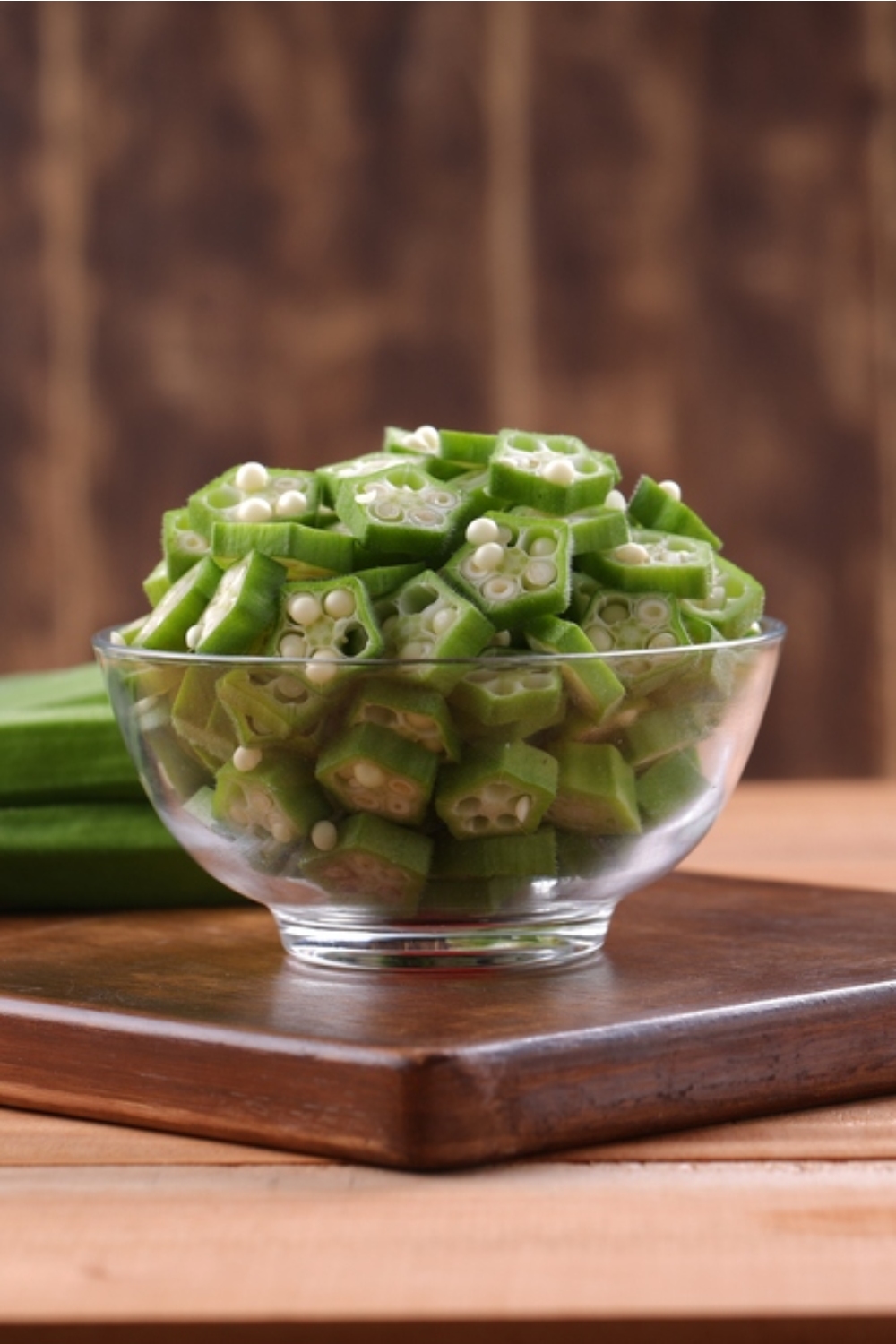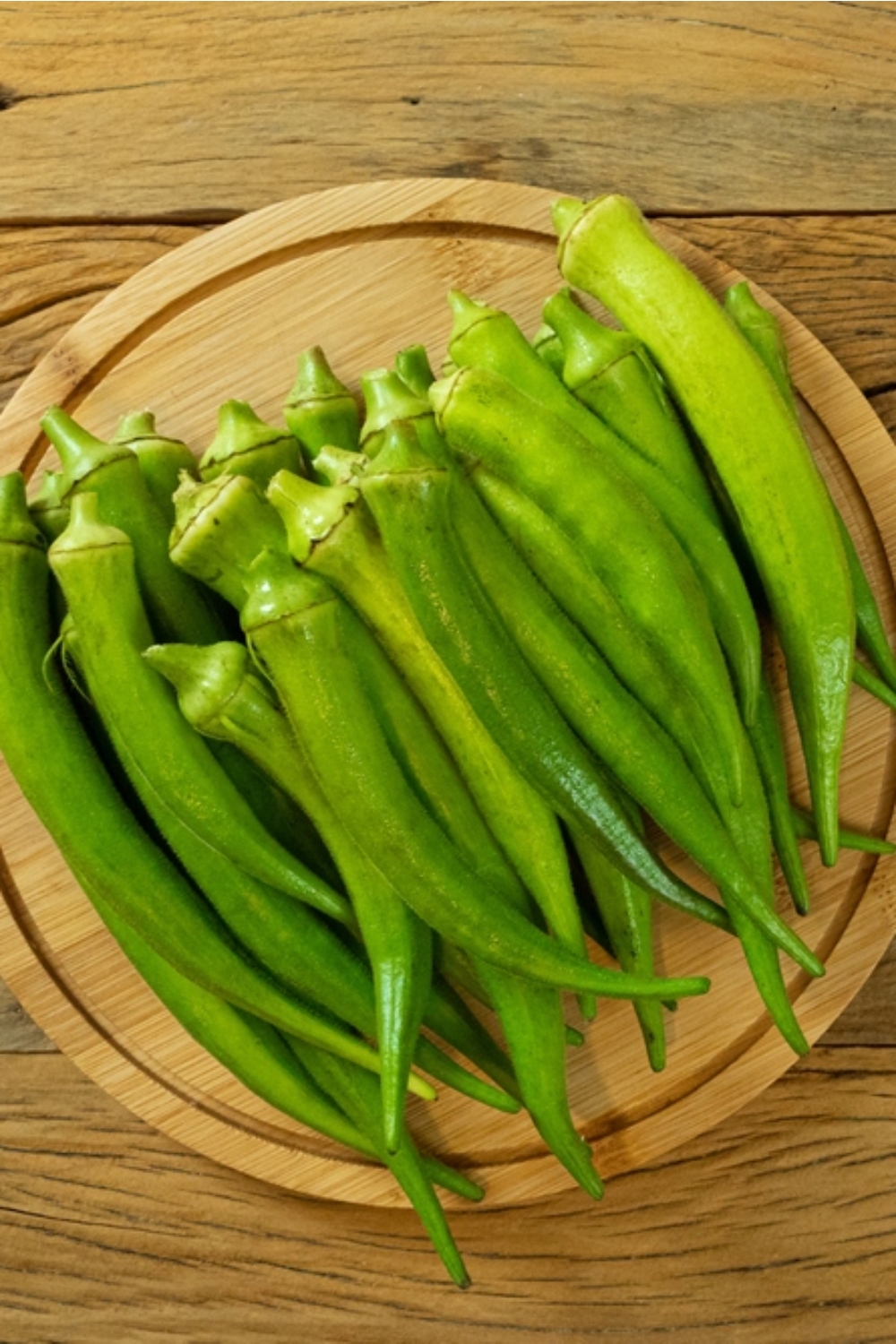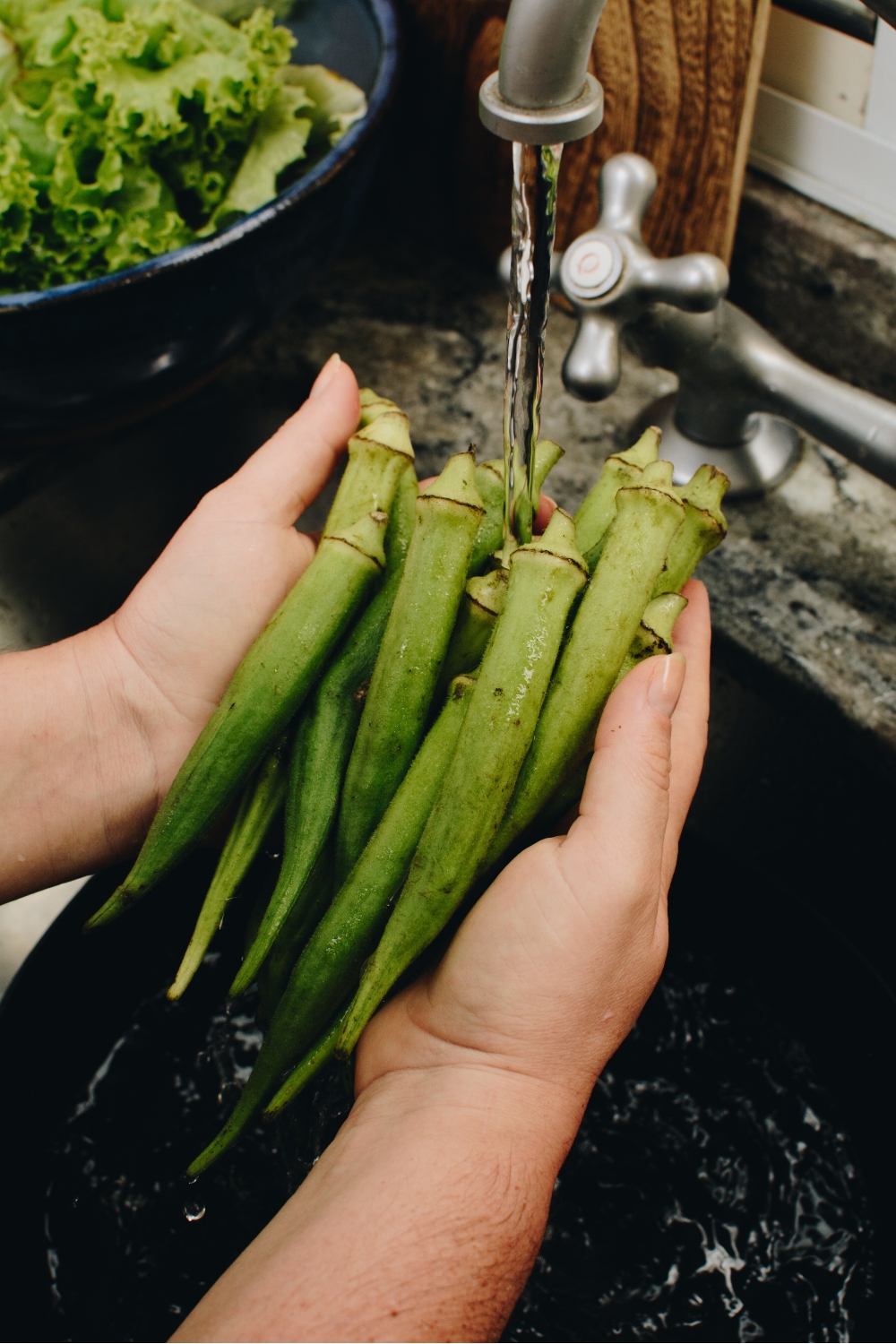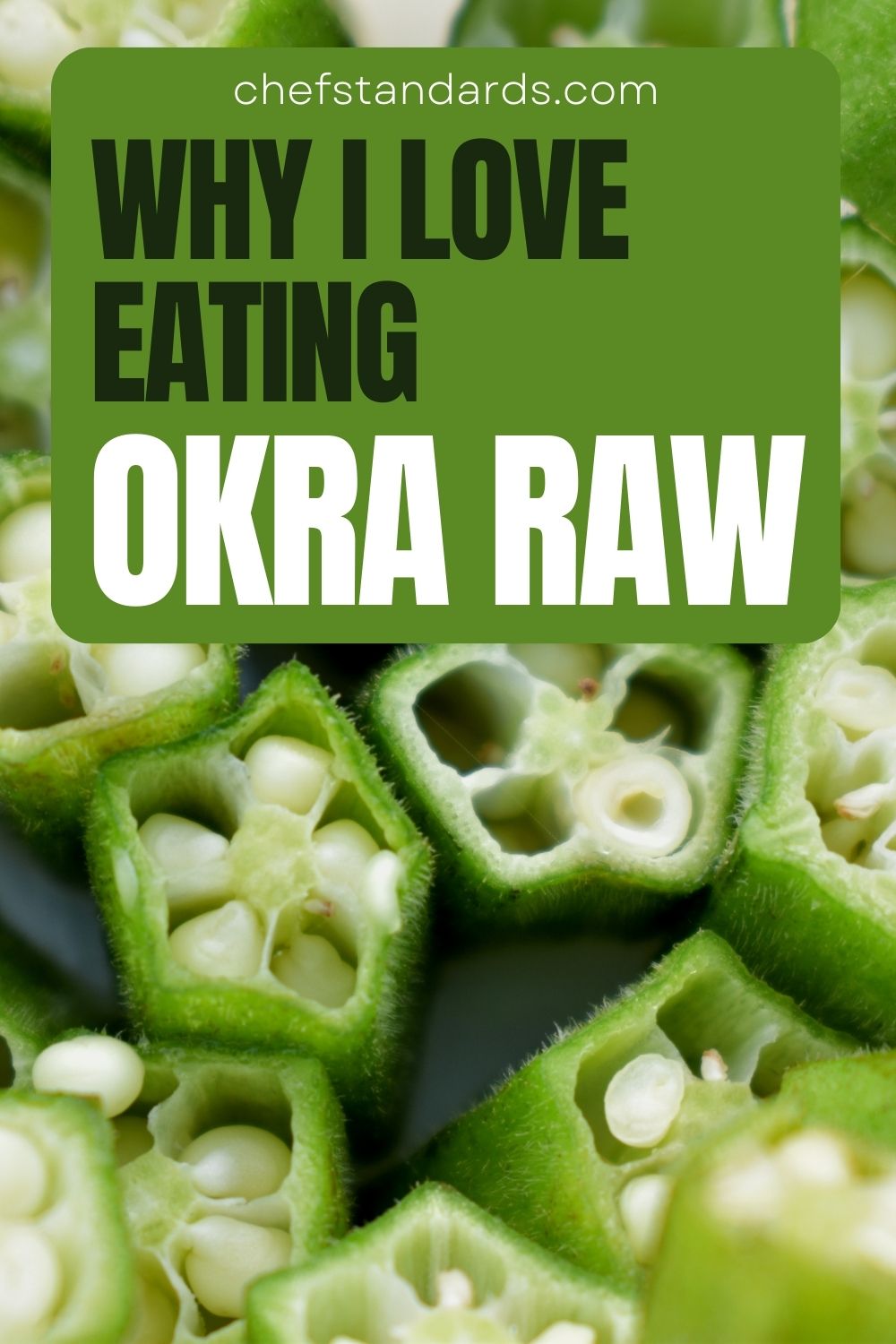Okra is a type of veggie that is cultivated for its edible green seed pods, which are commonly used in cooking in various cuisines around the world.
Those seeds are recognized as a flavorful and versatile ingredient for so many dishes, mostly soups, and stews, but many others as well. Another great thing is that they are also quite healthy and nutritious.
Green seed pods of okra are mostly cooked. But can you eat okra raw? Although it is not very common, you can actually eat raw okra.
But before you do that, read this article to get the best out of those seeds.
Can Okra Be Eaten Raw?

Okra, a versatile and nutritious vegetable, is commonly enjoyed in various cooked dishes, but have you ever considered eating it raw?
The answer is a resounding yes! Raw okra can be consumed, and while it might not be as prevalent as its cooked counterpart, it offers a distinct taste and texture worth exploring.
The Nature Of Raw Okra
Raw okra possesses a unique appearance and texture that sets it apart from the cooked version. Its elongated, ribbed pods are tender when young and become more fibrous as they mature.
When biting into a raw okra pod, you’ll notice a slight crunch and a subtle earthy flavor. Some even describe its taste as mildly grassy or reminiscent of fresh green beans.
Despite its appealing flavor to some, raw okra’s distinctive characteristic is the mucilaginous or slimy substance it releases when cut or chewed. For me personally, this is quite off-putting, so I always prefer okra in its cooked form.
But not everyone has the same preferences, so it is best to try it on your own and decide for yourself.
Concerns About Eating Raw Okra
Are there any safety concerns about eating okra raw? Fortunately, most types of okra that are most commonly eaten are 100% safe to eat and sometimes even healthier.
However, there are some downsides to eating this vegetable that starts with O.
• Slimy Texture: The mucilage in raw okra might be unappealing to some, especially those who dislike slimy textures in their food.
• Fibrous Pods: As okra pods mature, they become more fibrous, making them tougher and less enjoyable to eat raw.
• Flavor Preference: Raw okra’s taste might not be to everyone’s liking, and some might prefer a milder and more subdued flavor that cooking brings out.
Benefits and Nutritional Value of Raw Okra

There are definitely benefits to consuming okra raw, and many of them are directly related to nutrition and health. So, let’s take a look.
• Nutrient Retention: Raw okra retains more of its natural nutrients since it isn’t exposed to the high heat of cooking, preserving its vitamins, minerals, and enzymes.
• Fresh and Crisp: Eating okra raw allows you to experience its natural crispness and freshness, which is a different culinary experience.
• Quick and Convenient: Raw okra requires no cooking preparation, making it a convenient and time-saving option for those on the go.
Nutritional Value
• Rich in Vitamins: Raw okra is a fantastic source of vitamins that play crucial roles in various bodily functions. Those vitamins include vitamins A, C, and K, as well as vitamin B complex (B1, B2, B3, B6, and B9).
• Essential Minerals: The minerals potassium, magnesium, and calcium are present in okra.
• High in Dietary Fiber: Raw okra is an excellent source of dietary fiber, which are essential for digestive health, weight management, and blood sugar control.
• Low in Calories and Fat: For those conscious of their calorie intake, raw okra is a fantastic choice. It is low in calories and virtually fat-free, making it a guilt-free addition to any diet.
• Antioxidant Properties: Raw okra contains antioxidants such as flavonoids, polyphenols, and beta-carotene, which help neutralize free radicals in the body, protecting cells from oxidative damage and reducing the risk of chronic diseases.
How To Prepare Raw Okra?

While the slightly slimy texture might be a concern for some, proper preparation can help mitigate this aspect and enhance the overall taste and appeal of raw okra. So, below is a guide to preparing raw okra the right way.
1. Choose Fresh and Tender Okra: Look for young, small to medium-sized pods that feel tender to the touch. Avoid larger, more mature pods, as they tend to be tougher and more fibrous.
2. Wash Thoroughly: Before preparing raw okra, wash the pods thoroughly under cool running water. Gently rub the surface to remove any dirt or debris.
3. Trim the Ends: Using a sharp knife, trim off the stems and tips of the okra pods. This step ensures a clean and neat appearance.
4. Slice or Chop as Desired: You have the option to slice or chop the okra pods based on your preference and the dish you plan to use them in.
Slicing the pods into thin rounds is a popular choice, as it exposes more surface area and helps reduce the slimy texture.
5. Soak in Lemon Water (Optional): If you want to minimize the sliminess of raw okra, consider soaking the sliced pods in water with a splash of lemon juice for about 30 minutes before consumption.
The acidity from the lemon helps to neutralize the mucilage.
Delicious Raw Okra Recipes
Raw okra might not be as commonly used as its cooked counterpart, but with a little creativity, you can transform it into delectable dishes and snacks that showcase its natural crunch and fresh flavor.
Here are some mouthwatering raw okra recipes and serving ideas to inspire your culinary adventures:
1. Okra and Tomato Salad: Create a refreshing salad by combining sliced raw okra with cherry tomatoes, thinly sliced red onions, and fresh basil leaves.
Drizzle the salad with a zesty vinaigrette made from olive oil, lemon juice, Dijon mustard (an excellent grain mustard substitute), and a touch of honey. The combination of textures and flavors will tantalize your taste buds.
2. Okra Salsa: Prepare a unique and vibrant salsa by combining finely chopping raw okra, diced mango, red bell peppers, jalapenos, and cilantro (avoid dry cilantro).
Mix in lime juice, a pinch of cumin, and a dash of salt for to create a delightful sweet and tangy dip. Serve this colorful salsa with tortilla chips or as a topping for grilled fish or chicken.
3. Okra and Yogurt Dip: Blitz raw okra in a food processor along with Greek yogurt, garlic, lemon zest, and a hint of cayenne pepper. The result is a creamy and nutritious dip that pairs perfectly with veggie sticks or pita bread.
4. Okra Ceviche: For a tropical twist, marinate raw okra slices in lime juice with diced pineapple, red onion, and avocado.
The citrusy acidity slightly “cooks” the okra while retaining its crispness. This exotic ceviche makes for an impressive and healthy appetizer.
5. Okra Chips: Slice raw okra into thin rounds and toss them with some olive oil, salt, and your preferred spices, such as paprika or cayenne.
Arrange the slices on a baking sheet and bake at a low temperature until they turn crisp, resulting in delicious, guilt-free okra chips.
Conclusion
So, can you eat okra raw? There is nothing wrong with eating raw okra, especially from a safety point of view, and it is sometimes even healthier, as high temperatures don’t destroy essential nutrients.
However, some people do not find raw okra very appealing because of its strong flavor and sliminess. Aside from that, you have to prepare raw okra the right way and incorporate it into a recipe that will delight your taste buds.
However, all of that is discussed in this article, so if you read it carefully, I believe there won’t be any problems.

